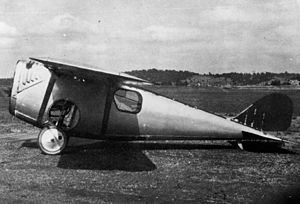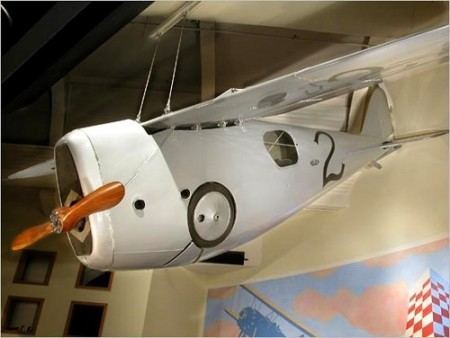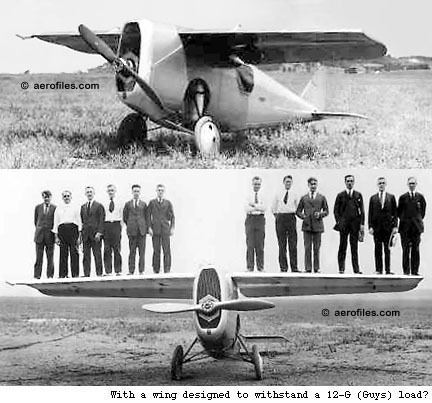Top speed 306 km/h Length 6.91 m | Wingspan 6.45 m | |
 | ||
The Dayton-Wright RB-1 (Rinehart-Bauman model one), also known simply as the Dayton-Wright Racer was a racing aircraft developed in the United States to participate in the 1920 Gordon Bennett Cup air race. Advanced for its day, the aircraft was a high-wing monoplane with a monocoque fuselage and cantilever wing (built of solid balsa wood covered in plywood and linen that incorporated a Grant designed mechanism to vary its camber in flight by moving the leading edge and trailing edge. The aircraft also featured a retractable undercarriage operated by a hand-crank making it one of the first instances of undercarriage retraction for aerodynamic benefit alone. The propeller shaft was mounted through a large oval radiator, the pilot had no forward view, but was provided with flexible celluloid side windows. Cockpit access was through a hatch in the top of the fuselage. A prototype was built using non-retractable gear and strut-braced wings. A shorter tapered "racing wing" was installed afterward with leading and trailing edge flaps interconnected with landing gear deployment. The mechanisms and hinges for the wing flaps were exposed across the top of the solid wing. The racing wing produced directional instability requiring small tail fins to be added.
Contents

Operational history

Dismantled and shipped to France, the RB-1 was flown by Howard Rinehart in the 28 September 1920 race, but was forced to withdraw after a cable failure prevented full retraction of the gear/flap mechanism, allowing the two Nieuport-Delage NiD.29V racers to make a one-two finish. After the race it was returned to the United States, and is now preserved at the Henry Ford Museum in Dearborn, Michigan. Many of the aircraft's advanced features were incorporated into a prototype fighter design, the XPS-1.
Variants
Specifications
Data from 1921 Aircraft Yearbook
General characteristics

Performance



